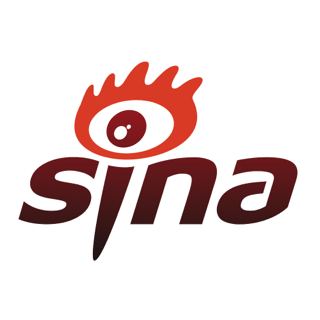不知从何时起,网络上文字消息的传送总少不了表情符号的陪伴。从最初标点符号的简单组合到后来千姿百态的动态表情,表情符号在“看不见”的网络聊天中充当了我们的情绪传递员。表情符号不断发展,功能日趋强大,但我们不禁要问:习惯了用符号传情达意的一代还能自如地面对面交流吗?
You use them to take the edge off2) a joke. Lovebirds use them to playfully flirt. Sometimes you need more than just words, and nothing else but a wink will do. They’re emoticons, and after 30 years, they’re still changing the way we communicate—even more than you think. When you want to share straightforward ideas, simple punctuations do the job. When you want to subtly ask a favor or send a coy3) quip4), you need emoticons, or emotional icons, to add nuance to your words. The smiley5) and its descendants are woven into the fabric of our culture—and changing the way we work and play.
你用它们来把握玩笑的尺度。恋人间用它们来嬉闹调情。有时你需要的不仅仅是文字,一个眨眼比什么都能传情达意。它们就是表情符号。30年过去了,表情符号依然在改变着我们的交流方式,这种改变甚至超乎你的想象。当你想要分享一些简单直接的想法时,几个简单的标点就能帮你做到。如果你想巧妙地向对方求助或是害羞地给对方发送俏皮话,你都需要借助表情符号来为文字增添几分微妙的感情。笑脸符号及其衍生出的表情符号融进了我们的文化,改变着我们工作与娱乐的方式。
The Emoticon Through History
表情符号发展史
Many consider Scott Elliott Fahlman, a professor at Carnegie Mellon University, the inventor of the modern-day emoticon. On September 19, 1982, he sent an e-mail to students, asking them to use symbols to show their intended tone.
很多人认为现代表情符号的发明者是卡内基·梅隆大学的斯科特·埃利奥特·法尔曼教授。1982年9月19日,他给学生们发送了一封电子邮件,要求他们用符号来表示他们想传达的语气。
“I propose the following character sequence for joke markers: :-) Read it sideways,” he said, adding to use “:-(” to show more serious messages. But that symbol quickly evolved to mean displeasure, frustration or anger.
他在邮件中写道:“我提议用‘:-)’这一字符串表示开玩笑的语气。阅读这串字符时把头侧过来。”他还提到用“:-(”来表示更为严肃的信息,但这个符号很快就演变成表示不高兴、沮丧或生气的意思。
The impulse to show emotional intent with a simple symbol, however, dates back even further. In 1969, Vladimir Nabokov, author of Lolita, foreshadowed the modern symbol. When asked to rank himself among writers, he said, “I often think there should exist a special typographical6) sign for a smile—some sort of concave7) mark, a supine8) round bracket, which I would now like to trace in reply to your question.”
然而,用简单的符号来表达感情意图的念头可以追溯到更早的时候。1969年,《洛丽塔》的作者弗拉基米尔·纳博科夫就预示了现代表情符号的出现。当被问及自己在作家群体中处于何种地位时,他说:“我常常觉得应该有一种特殊的印刷体符号来表示微笑——某种凹陷的标记,一个向上弯曲的圆括号。这样,我此刻就可以画一个这样的符号来回答你的问题了。”
Abraham Lincoln may have even used it, back in one of his speeches from 1862. The New York Times reported on a sideways “winky face” after the word “laughter” typed into his speech. This sparked a debate on whether the smiley was a grammatical notation from the time, an early emoticon attempt or simply a typo9). He probably tried to write “==|;o)>.”
亚伯拉罕·林肯甚至可能早在1862年的一次演讲中就使用了表情符号。《纽约时报》曾报道说,在林肯的演讲稿中,“笑声”一词之后打出了一个横过来的“眨眼笑脸”。这引发了一场争论:那个笑脸究竟是当时的一种语法符号,还是表情符号的早期尝试,抑或仅仅是一个印刷错误呢?也许他当时想写的是“==|;o)>”。
In some ways, we all want to say more with fewer words. Ancient Greek playwrights used the chorus to show the audience the characters’ hidden emotional states. That evolved into the theatrical “aside”—a comment or speech made to viewers, who understands the often witty or sarcastic remarks aren’t heard by other characters in the play. The aside, like the emoticon, gives you emotional insight, so you can better relate to the person speaking.
从某种程度上说,我们都想用更少的文字表达更多的内容。古希腊剧作家利用合唱团向观众展现角色内心深处的感情状态。这种方式后来演变成戏剧的“旁白”——对观众发表的评论或演说。观众也明白这些通常充满智慧或讽刺的评论是剧中的其他角色听不到的。旁白就如同表情符号一般,可以让你对感情有更深入的了解,这样你就能更好地理解说话者。
The emotion-revealing aside took hold10), and luminaries11) from Shakespeare to O’Neill12) embraced them, as do artists today. Look at The Office or Modern Family—characters step away from the action and give you a wry13) observation.
通过旁白来展现情感的方式确立下来,像莎士比亚和尤金·奥尼尔这样的戏剧泰斗都喜欢采用这种方式,如今的艺术家也是如此。看看电视剧《办公室》或《摩登家庭》——剧中人物会从剧情中跳出来,向观众发表一些讽刺的评论。
Yup, that’s the same Shakespeare technique.
没错,这和莎士比亚使用的手法一模一样。
Spicing Up the Workplace
工作中的调剂品
Emoticons, especially in work-related e-mails, can add a spark to romances. Nearly half of women and over half of men who date a co-worker say their romance started with an emoticon in an e-mail or text, according to a Whatsyourprice.com survey. That’s not surprising, since 70 percent of women and 90 percent of men say receiving a winky face indicates a chance for romance or a first date.
使用表情符号,特别是在工作邮件中使用表情符号,可以增加浪漫的火花。Whatsyourprice.com (译注:一家婚恋网站)的调查结果显示,在与同事约会过的受访者中,有接近一半的女性和超过一半的男性称两人之间的浪漫情愫最初来源于电子邮件或短信中使用的表情符号。这并不令人惊讶,因为70%的女性和90%的男性都认为如果收到对方发送的眨眼笑脸,就表明有机会与之发展恋情或进行初次约会。
But more and more, people who grew up in the digital age are changing the workplace, and they bring habits like regular use of emoticons. So, if you light-heartedly punctuate e-mails with emoticons, you may want to think again.
但成长于数字时代的人们正越来越多地改变着工作环境,他们把经常使用表情符号等习惯带入工作中。所以,当你漫不经心地在邮件中时不时使用表情符号时,你可能要三思了。
The Next Generation of Emoticons
新一代表情符号
Emoticons aren’t without controversy, especially as they’ve evolved. “This destroys the whimsical14) element of the original,” Professor Fahlman said, speaking to how complicated emoticons have become with color and animation. Likewise, artist and storyteller Rives, called the “first 2.0 poet,” uses emoticons to bring words to life, but he embraces the old-school, symbols-only emoticon, fusing bare-bones15) symbols with wit and creativity.
人们对于表情符号并不是没有争议,尤其是在它们进一步发展之后。在谈到色彩和动画使表情符号变得复杂时,法尔曼教授说:“这破坏了最初的表情符号中那种奇思妙想的意味。”被称作“首位2.0版诗人”的艺术家、小说家里夫斯就运用表情符号来使文字充满生机,但他同样倾向于使用仅由符号构成的旧式表情符号,在极简的符号中融入智慧和创造力。
Purists value keyboard-only emoticons, while younger generations embrace an advanced set of icons—the emoji. Originating in Japan, the emoji is a moving animation of bright images and colors used to express ideas. In addition to the humble smiley, emoji represent things such as weather, vehicles, food and drink, and even animals and plants. They’re emoticons on steroids16).
纯粹主义者崇尚只用键盘就能打出来的表情符号,而年轻人却喜欢更为高级的一套表情符号——emoji。这种表情符号起源于日本,是一种具有鲜明形象和色彩的动画,用来表达说话人的想法。除了质朴的笑脸外,emoji还能表示天气、汽车、食物、饮料甚至动植物。它们是“打了激素”的表情符号。
Thanks to emoji, the subtlety of first-generation emoticons could be lost on younger generations. Teens and tweens17) who use apps like Instagram, which rely more heavily on pictures than text, are often emoji fanatics. Many download apps containing hundreds of emoji to capture exactly what they want to express, but can’t say.
由于emoji的使用,年轻一代可能无法再领会第一代表情符号中所蕴含的微妙情感了。青少年以及“吞世代”通常是emoji的狂热追随者,他们使用Instagram (译注:一款图片分享应用程序)这类应用程序,这些程序很大程度上依赖于图片而非文字。很多人会下载带有成百上千个emoji的应用程序,以此来准确捕捉他们想要表达却不可名状的感情。
But there’s a drawback to all that convenience. While emoji can express complex ideas, researchers say they can also stifle18) the development of emotional intelligence. Teens and tweens need face-to-face interaction—good ole’ talking—to develop skills that are crucial to future success.
然而,所有这些便利也带来了一个问题:尽管emoji能够表达复杂的思想,但研究者称它们也会压制人们情商的发展。青少年及“吞世代”需要通过面对面的互动——美好的旧式谈话——来培养相关技能,这些技能对他们日后的成功至关重要。
How Emoticons Betray Us
表情符号如何出卖我们
When you want a fun way to flesh out19) short chunks of writing in e-mails or texts, emoticons are effective. Adding a smiley saves you time. It’s quick and easy—one symbol can replace 15 to 20 words of explanation. But they can also be used against us, and a Facebook project hints that convenience has a cost, at least on social media.
如果你想用一种有趣的方式使邮件或短信中的一小段文字变得充实,使用表情符号是一种有效手段。添加一个笑脸可以为你节省时间,快捷又简便——一个符号可以代替15~20个词的解释。但是,表情符号也可以被用来对付我们。Facebook的一个研究项目表明,便利是需要付出代价的,至少在社交媒体中是这样。
Facebook is testing a status box that lets you share with visuals. You see a drop-down menu of activity options, so if you say you’re feeling sad or ecstatic20), a corresponding smiley pops up, and if you say you’re reading or watching TV, a book or eyeglasses pop up. That feature lets you give a visual representation of your day—but it lets advertisers target you more easily.
Facebook正在测试一个状态栏功能,它能让你用图像分享状态。你会看到一个下拉菜单,其中列出了一些状态选项。如果你说你感到悲伤或狂喜,一个相应的表情符号便会弹出来;如果你说你在读书或看电视,一本书或一副眼镜的图标便会弹出来。这一特色功能使你对自己的一天有一个视觉上的展示。但是,它也会使广告商更容易找到你。
Emotions are at the heart of advertising, and emoticons let them find you faster. Too many sad emoticons, for example, may one day bring up ads for prescription depression medication.
感情是广告关注的核心,而表情符号可以使广告商更迅速地找到你。例如,如果你大量使用悲伤的表情,某天你可能会收到治疗抑郁症的处方药广告。
Beyond Emoji
Emoji的下一代
Just as fast as the emoji arrived, the evolution is on the horizon—icons you can personalize. The app “Talking Emoji Friends,” for instance, lets you record funny messages in high-pitched voices, paired with, of course, animated emoticons. Fantastic. Now your friends can send you their own brand of annoying icons. ==|;o)>
Emoji问世之后,表情符号的新发展很快又初露端倪——自定义表情符号出现。例如,运用一款名为“Talking Emoji Friends”的应用程序,你可以用尖细的声音来录制有趣的信息,当然要配上动态表情符号。好极了,现在你的朋友可以把他们自制的讨厌表情符号发送给你了。==|;o)>
By Margaret Rock 译 / Fiona Cai
1. emoticon [ɪˈməʊtɪkɒn] n. [计]表情符号
2. take the edge off:使钝;减弱
3. coy [kɔɪ] adj. 腼腆的,羞怯的
4. quip [kwɪp] n. 俏皮话,妙语
5. smiley [ˈsmaɪli] n. [计]笑脸符
6. typographical [ˌtaɪpəˈɡræfɪk(ə)l] adj. 排字上的,印刷上的
7. concave [ˈkɒnkeɪv; kɒnˈkeɪv] adj. 凹的,凹面的
8. supine [ˈsuːpaɪn] adj. 仰卧的,面朝上的
9. typo [ˈtaɪpəʊ] n. 排印错误,打字错误
10. take hold:确立;固定下来
11. luminary [ˈluːmɪnəri] n. 杰出人物,泰斗
12. O’Neill:即尤金·奥尼尔(Eugene O’Neill, 1888~1953),美国著名剧作家,美国民族戏剧的奠基人,主要作品有《天边外》(Beyond the Horizon)、《啊,荒野》(Ah, Wilderness)、《卖冰的人来了》(The Iceman Cometh)等。奥尼尔一生获得过四次普利策奖,并于1936年获得诺贝尔文学奖。
13. wry [raɪ] adj. 富于幽默感的;讽刺的
14. whimsical [ˈwɪmzɪk(ə)l] adj. 异想天开的;心血来潮的
15. bare-bones [ˈbeə(r)ˈbəʊnz] adj. 少得不能再少的
16. steroid [ˈstɪərɔɪd] n. [生化]类固醇(激素)
17. tween [twiːn] n. 通常指10~12岁的人,即介于儿童和青少年之间的人,可称为“吞世代”。
18. stifle [ˈstaɪf(ə)l] vt. 压制
19. flesh out:充实……的内容;赋予……以真实感
20. ecstatic [ɪkˈstætɪk] adj. 狂喜的
发布于:中国香港

